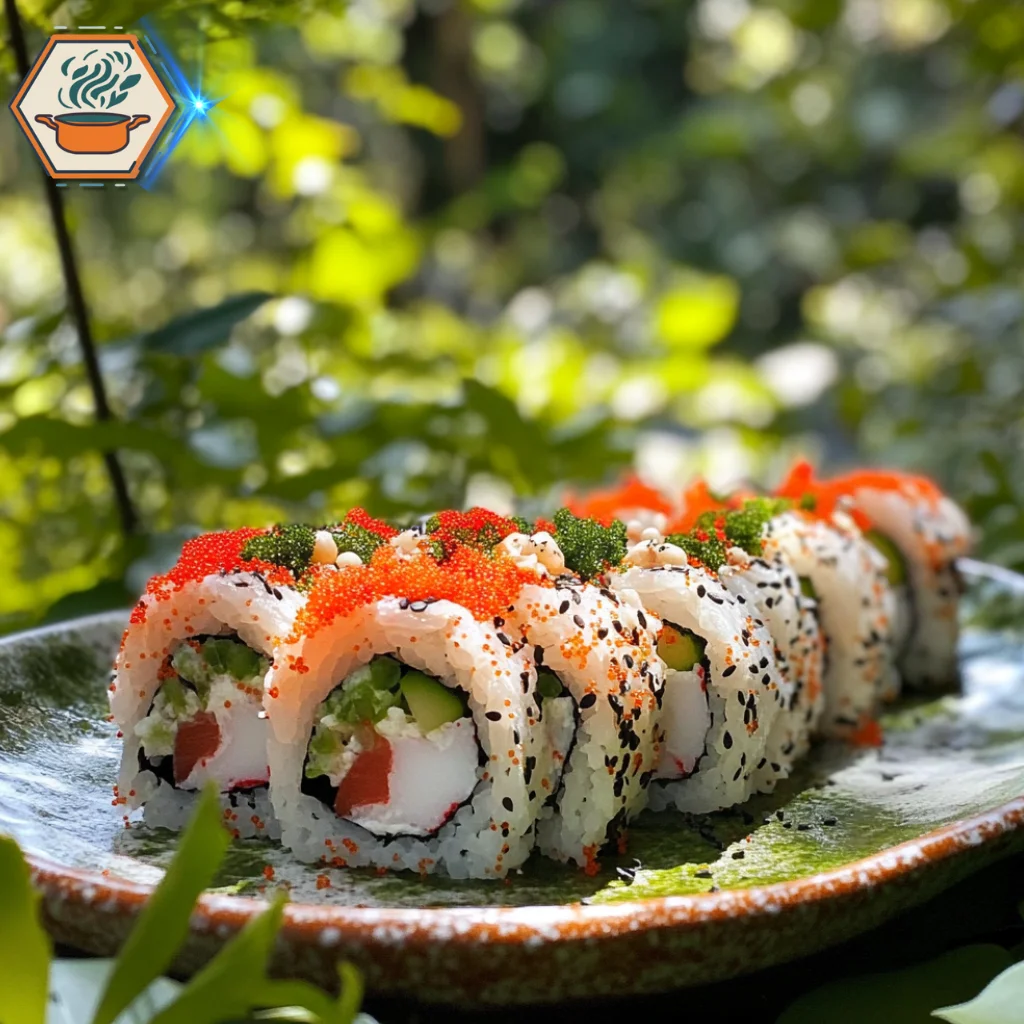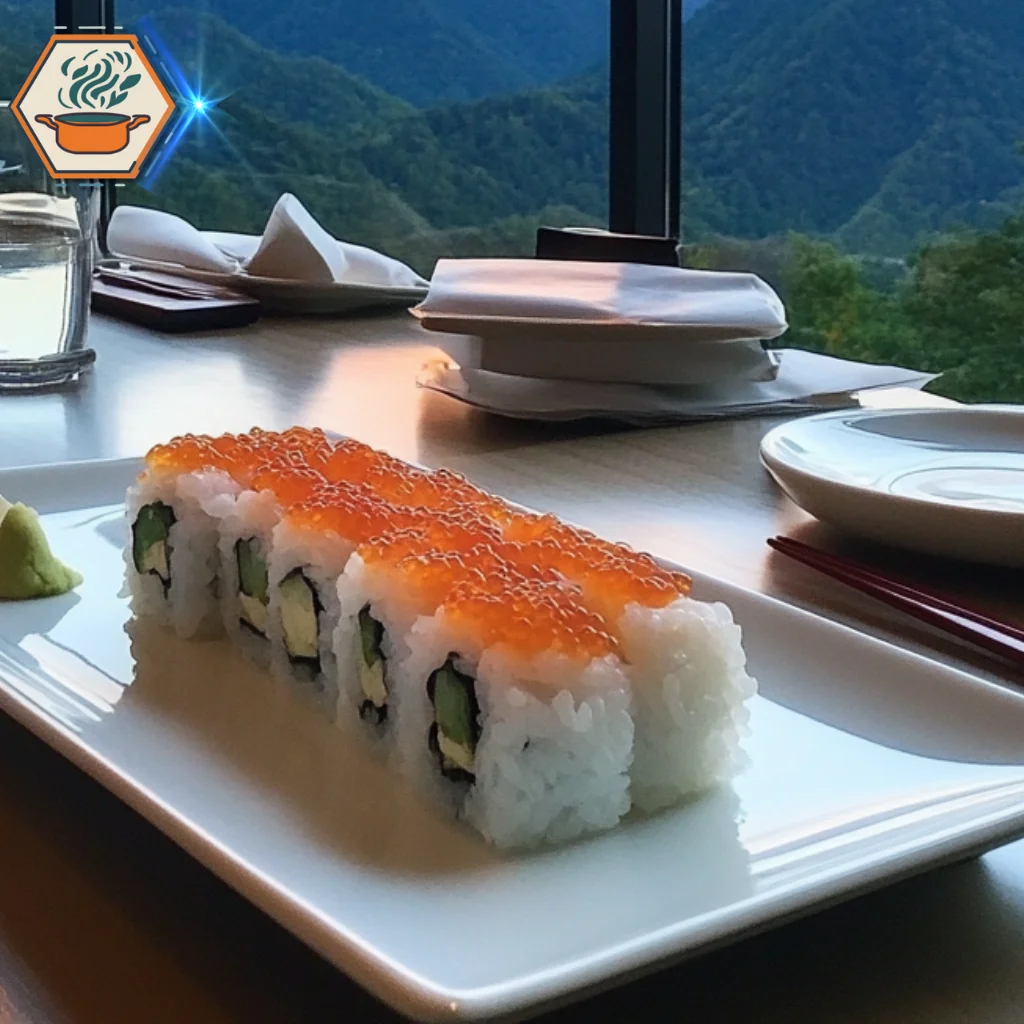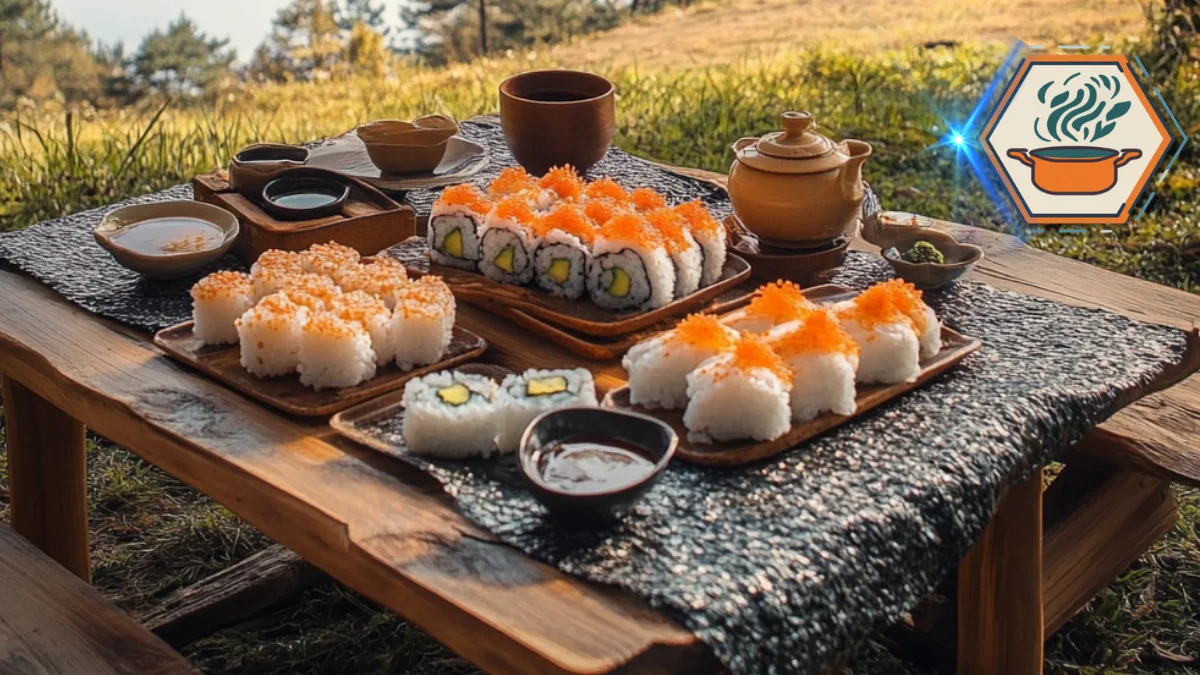Table of Contents
Understanding Tobiko
Introduction to Tobiko
Tobiko, widely recognized as the vibrant orange fish eggs used in sushi, plays a crucial role in Japanese cuisine. Known for its crunchy texture and subtly sweet taste, tobiko often enhances sushi rolls, nigiri, and sashimi. Its visual appeal and distinct flavor make it a favorite among sushi enthusiasts and culinary professionals alike.
What Is Tobiko?
Tobiko refers to the roe of flying fish, a species that thrives in tropical and subtropical oceans worldwide. These tiny eggs stand out due to their vibrant colors and natural crunch, which add texture to dishes. Although typically orange, tobiko can also appear in green (infused with wasabi), black (squid ink), or yellow (yuzu), offering diverse flavors and aesthetics.
The Origins of Flying fish roe in Culinary Traditions
Deeply rooted in Japanese culinary traditions, tobiko has been cherished for centuries. It was originally used as a flavorful and visually striking ingredient in sushi, providing an economical yet delicious way to utilize every part of the fish. Over time, its appeal spread globally, making it a staple in fusion cuisines and gourmet recipes.
To learn more about how culinary traditions evolve, visit our trusted resource on Traditional Food Cultures.
What Are Fish Eggs?
Fish eggs, often referred to as roe, are the fully ripe internal eggs of fish or certain aquatic animals. They are a versatile ingredient in global cuisines, commonly used for their nutritional value and distinct taste. The term “roe” encompasses various types, such as caviar, Flying fish roe , ikura, and masago, each with unique flavors and culinary uses.
Types of Fish Roe: Tobiko, Caviar, Ikura, and Masago
Fish roe is categorized into different types based on the fish species and the preparation method:
- Caviar: Derived from sturgeon, it is a delicacy with a rich, buttery flavor.
- Flying fish roe : Flying fish roe, known for its crunch and vibrant appearance.
- Ikura: Salmon roe, offering a larger size and a distinct briny flavor.
- Masago: Capelin fish roe, often considered a more economical alternative to Flying fish roe .
Each type brings unique characteristics to dishes, but tobiko stands out for its balance of affordability, versatility, and taste.
How Flying fish roe Differs from Other Fish Eggs
Tobiko distinguishes itself from other fish roe in several ways:
- Texture: Flying fish roe natural crunch adds a unique layer to dishes.
- Color: Its vibrant hues enhance the visual appeal of sushi and other plates.
- Flavor: With a subtle sweetness, Flying fish roe complements a variety of ingredients.
- Size: Flying fish roe is smaller than ikura but larger than masago, offering a versatile middle ground.
Harvesting and Production of Tobiko
Methods of Collecting Flying fish roe
Flying fish roe is harvested from flying fish through sustainable methods that prioritize the well-being of marine ecosystems. Fishermen carefully extract the roe, ensuring minimal impact on the species and their habitats.
Ethical and Sustainable Practices in Tobiko Production
With growing concerns about sustainability, ethical practices in Flying fish roe production have become paramount. Many producers are now adopting eco-friendly techniques, such as selective harvesting and traceable supply chains, to meet consumer demand while preserving marine biodiversity.
Nutritional Profile of Flying fish roe
Vitamins and Minerals Found in Flying fish roe

Flying fish roe is a nutrient-rich food packed with essential vitamins and minerals, including:
- Vitamin B12: Vital for brain health and energy production.
- Omega-3 Fatty Acids: Supportive of heart health and brain function.
- Zinc and Selenium: Key for immune support and antioxidant activity.
Is Tobiko Healthy for Regular Consumption?
Tobiko is considered healthy when consumed in moderation. Low in calories and rich in nutrients, it is an excellent choice for a balanced diet. However, due to its sodium content, individuals with dietary restrictions should be mindful of their intake.
Tobiko in Cuisine and Culture
Flying fish roe , commonly known as flying fish roe, plays a significant role in global culinary traditions and food culture, particularly in Japanese cuisine. Its vibrant colors, crunchy texture, and unique flavor make it a standout ingredient in sushi and beyond. Below, we explore its culinary uses, cultural significance, and the innovations that have brought it to tables worldwide.
Culinary Uses of Flying fish roe
Flying fish roe is a versatile ingredient that adapts seamlessly to a variety of dishes. In Japanese cuisine, it is often used as a topping for sushi and sashimi, adding both visual appeal and a satisfying crunch.
Traditional Dishes Featuring Tobiko
- Nigiri Sushi: Tobiko is commonly placed atop hand-shaped rice, occasionally mixed with wasabi or quail eggs for added flavor.
- California Rolls: These popular sushi rolls often feature Flying fish roe on the exterior, adding a burst of color and a subtle salty taste.
- Gunkan Maki: Known as “battleship sushi,” these sushi pieces wrap Flying fish roe in nori for a bold flavor presentation.
Innovative Uses in Modern Cuisine
The popularity of Flying fish roe has grown beyond traditional Japanese cooking. It is now celebrated in global fusion cuisine, appearing in creative dishes such as:
- Flying fish roe Tacos: A twist on Mexican street food, featuring Flying fish roe for added crunch.
- Pasta Toppings: It serves as a garnish for creamy pasta sauces, creating a visually striking and flavorful dish.
- Flying fish roe -Infused Aioli: Perfect as a dip or spread for seafood dishes.
How Flying fish roe Enhances Flavors
Tobiko’s distinct taste combines subtle sweetness with a salty umami punch. It complements ingredients like avocado, spicy mayo, and fresh fish. The texture of Flying fish roe also contrasts beautifully with soft or creamy elements in dishes.
Tobiko Varieties and Colorings
One of the reasons tobiko is so popular is its visual diversity. It naturally occurs in shades of red, orange, black, and green, and is often enhanced with natural or artificial flavorings to create new variations.
Naturally Occurring Variants
- Red Flying fish roe : The most common type, known for its mild and slightly sweet taste.
- Black Flying fish roe : Often infused with squid ink, this variant has a stronger, more savory flavor.
- Green Flying fish roe : Typically flavored with wasabi for an added spicy kick.
- Orange Flying fish roe : Known for its balance of salty and sweet, it’s a versatile addition to any dish.
How Flying fish roe Is Colored and Flavored
Tobiko’s colors and flavors are achieved by mixing the roe with natural or synthetic agents. For instance:
- Squid Ink: For black tobiko.
- Wasabi Extract: To create the spicy green variety.
- Yuzu or Citrus: For an added zest in some premium Flying fish roe offerings.
For an authoritative perspective on culinary ingredients, check this resource on Wikipedia’s entry on Roe, which provides a detailed overview of various fish roes, including Flying fish roe .
Tobiko in Global Food Trends

Tobiko’s rising popularity in Western cuisine reflects its adaptability. It frequently appears in fusion dishes, from sushi burritos to Flying fish roe -topped burgers, offering an exciting mix of tradition and innovation.
Popularity in Western Fusion Cuisine
In modern kitchens, chefs experiment with Flying fish roe to create dishes that appeal to both traditionalists and adventurous eaters. It serves as a bridge between authentic Japanese flavors and international trends, such as poke bowls and deconstructed sushi platters.
How Tobiko Is Perceived Across Cultures
While Flying fish roe is revered in Japan for its cultural significance, Western food enthusiasts admire it for its aesthetic appeal and bold taste. Its ability to elevate simple dishes into gourmet creations ensures its continued global appeal.
Practical Insights and FAQs About Tobiko
Buying and Storing Flying fish roe
Tobiko—often recognized for its vibrant orange hue and delightful crunch—is a favorite among sushi enthusiasts. However, buying and storing it properly is essential to maintain its quality and flavor. Whether you’re a first-time buyer or a seasoned chef, here are practical tips to ensure you always enjoy fresh tobiko:
- Look for reputable suppliers: When purchasing Flying fish roe , opt for well-known stores or brands with high-quality reviews. Fresh tobiko should be bright in color and free from any off-putting odor.
- Pay attention to packaging: Always check for airtight packaging, as exposure to air can compromise its quality.
- Refrigeration is key: Keep Flying fish roe refrigerated immediately after purchase and avoid temperature fluctuations to maintain its freshness.
For more culinary tips, check out our recipe on Lipton Onion Soup Meatloaf, a dish where tobiko can add an unexpected burst of flavor.
How to Identify Fresh Tobiko
Not all tobiko is created equal. Here’s how you can identify the freshest options available:
- Visual inspection: Fresh Flying fish roe has a vibrant, glossy appearance. Dull or faded colors indicate age or improper storage.
- Smell test: It should smell faintly of the sea, with no strong fishy odor.
- Texture check: Fresh Flying fish roe should feel firm and pop gently in your mouth when eaten. Slimy or overly soft tobiko is a sign of spoilage.
Pro Tip: Tobiko is often dyed for aesthetic purposes, so vibrant green, black, or even red tobiko doesn’t necessarily mean it’s artificial—just check the ingredient label to ensure there are no unwanted additives.
Best Practices for Storing Flying fish roe at Home
Storing tobiko the right way can prolong its shelf life and preserve its unique taste and texture:
- Keep it sealed: After opening, transfer the Flying fish roe to an airtight container to prevent contamination.
- Refrigeration: Always store tobiko in the coldest part of your refrigerator, ideally at a temperature between 0-4°C (32-39°F).
- Freeze for extended storage: If you’re not using Flying fish roe immediately, freezing it can preserve its quality for up to three months.
Note: When freezing Flying fish roe , divide it into small portions to avoid refreezing after thawing, which can compromise its texture.
For authoritative insights on seafood storage, refer to this comprehensive guide from Wikipedia, which offers tips on maintaining the quality of perishable items.
Simple Recipes Using Tobiko
Tobiko’s versatility makes it an excellent addition to various recipes. Here are some simple yet creative ways to incorporate tobiko into your meals:
- Tobiko Sushi Rolls: A classic, Flying fish roe adds color and crunch to sushi rolls like California or Dragon rolls.
- Flying fish roe Pasta: Toss Flying fish roe with creamy pasta sauce for a luxurious texture and flavor.
- Tobiko Topping: Sprinkle tobiko over scrambled eggs, avocado toast, or even meatloaf for a gourmet twist.
Common Myths and Misconceptions About Flying fish roe
Despite its popularity, tobiko is often misunderstood. Here, we debunk some common myths:
- Myth 1: Flying fish roe and caviar are the same
While both are fish roe, tobiko is distinct in its smaller size, firmer texture, and more affordable price compared to traditional caviar. - Myth 2: Flying fish roe is always raw
Tobiko is often pasteurized for preservation, making it safer for consumption. - Myth 3: Tobiko has no nutritional value
In reality, Flying fish roe is rich in protein, omega-3 fatty acids, and essential vitamins.
Frequently Asked Questions
Can Tobiko Be Eaten Raw?
Yes, Flying fish roe can be eaten raw, but it’s often pasteurized for safety, especially in commercial settings.
Is Tobiko Suitable for Vegetarians?
No, tobiko is fish roe, making it unsuitable for vegetarians or vegans.
What Are the Best Substitutes for Tobiko?
If tobiko is unavailable, you can use masago (capelin roe) or ikura (salmon roe) as substitutes, though they differ in texture and flavor.
How Long Does Tobiko Last After Opening?
Once opened, tobiko lasts about 3-5 days in the refrigerator. Freezing it can extend its shelf life up to three months.

